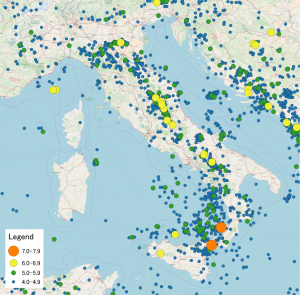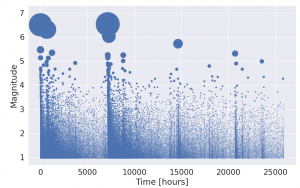Congratulations to Compass PhD student, Dan Ward, who along with his supervisors has had their paper Robust Neural Posterior Estimation and Statistical Model Criticism accepted for publication in NeurIPS 2022. (more…)
Student perspectives: Compass Conference 2022
A post by Dominic Broadbent and Dom Owens, PhD students on the Compass CDT, and Compass conference co-organisers.
Introduction
September saw the first annual Compass Conference, hosted in the newly refurbished Fry Building, home to the School of Mathematics. The conference was a fantastic opportunity for PhD students across Compass to showcase their research, meet with industrial partners and to celebrate their achievements. The event also welcomed the new cohort of PhD students, as well as prospective PhD students taking part in the Access to Data Science programme. (more…)
Student perspectives: ensemble modelling for probabilistic volcanic ash hazard forecasting
A post by Shannon Williams, PhD student on the Compass programme.
My PhD focuses on the application of statistical methods to volcanic hazard forecasting. This research is jointly supervised by Professor Jeremy Philips (School of Earth Sciences) and Professor Anthony Lee. (more…)
Special Guest Lecture: John Burn-Murdoch
Cohort 3 research projects confirmed
Our third Cohort of Compass students have confirmed their PhD projects for the next 3 years and are establishing the direction of their own research within the CDT. (more…)
Compass Conference 2022
Our first Compass Conference was held on Tuesday 13th September 2022, hosted in the newly refurbished Fry Building, home to the School of Mathematics. (more…)
Compass student publishes article in Frontiers
Compass student Dan Milner and his academic supervisors have published an article in Frontiers, one of the most cited and largest research publishers in the world. Dan’s work is funded in collaboration with ILRI (International Livestock Research Institute). (more…)
Student Perspectives: An introduction to normalising flows
A post by Dan Ward, PhD student on the Compass programme.
Normalising flows are black-box approximators of continuous probability distributions, that can facilitate both efficient density evaluation and sampling. They function by learning a bijective transformation that maps between a complex target distribution and a simple distribution with matching dimension, such as a standard multivariate Gaussian distribution. (more…)
Access to Data Science Event: start your PhD journey with Compass
Want to find out what a modern PhD in Statistics and Data Science is like?
Student perspectives: Neural Point Processes for Statistical Seismology
A post by Sam Stockman, PhD student on the Compass programme.
Introduction
Throughout my PhD I aim to bridge a gap between advances made in the machine learning community and the age-old problem of earthquake forecasting. In this cross-disciplinary work with Max Werner from the School of Earth Sciences and Dan Lawson from the School of Mathematics, I hope to create more powerful, efficient and robust models for forecasting, that can make earthquake prone areas safer for their inhabitants.
For years seismologists have sought to model the structure and dynamics of the earth in order to make predictions about earthquakes. They have mapped out the structure of fault lines and conducted experiments in the lab where they submit rock to great amounts of force in order to simulate plate tectonics on a small scale. Yet when trying to forecast earthquakes on a short time scale (that’s hours and days, not tens of years), these models based on the knowledge of the underlying physics are regularly outperformed by models that are statistically motivated. In statistical seismology we seek to make predictions through looking at distributions of the times, locations and magnitudes of earthquakes and use them to forecast the future.



